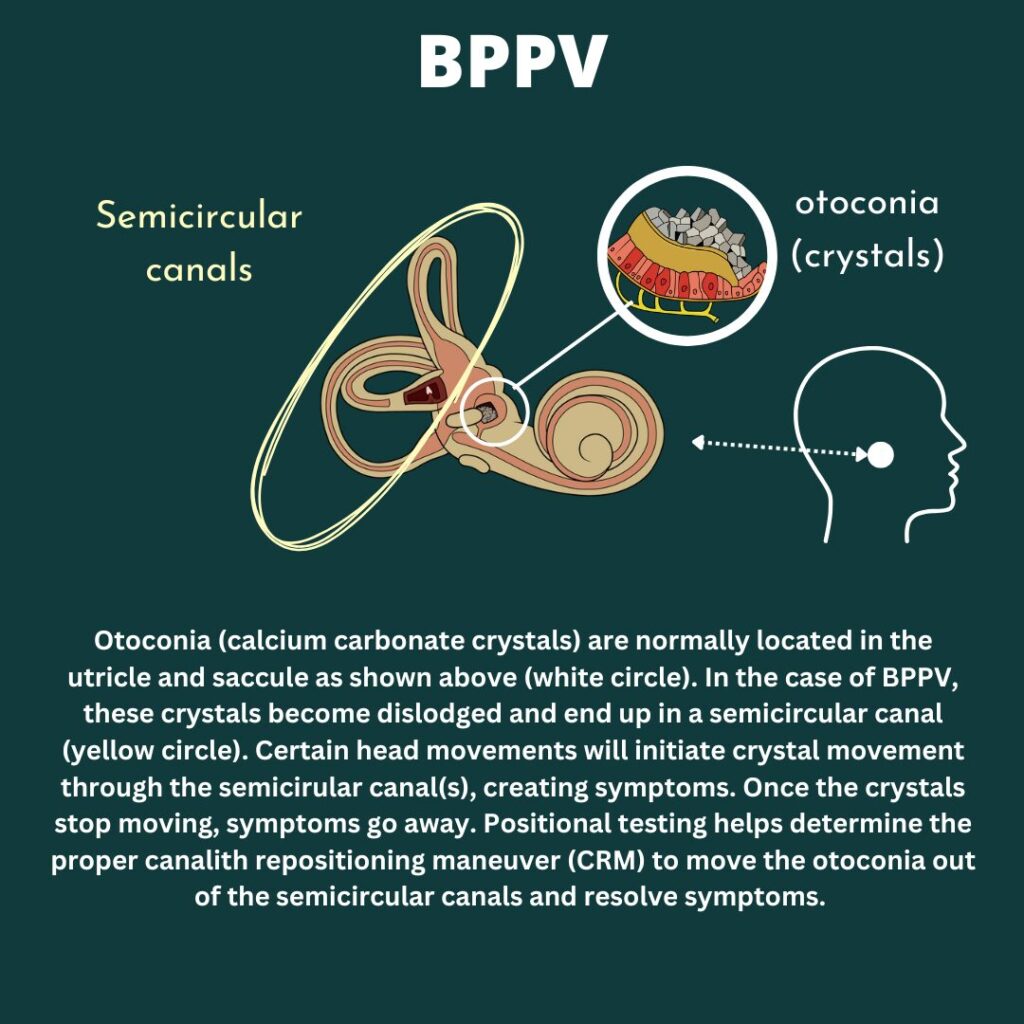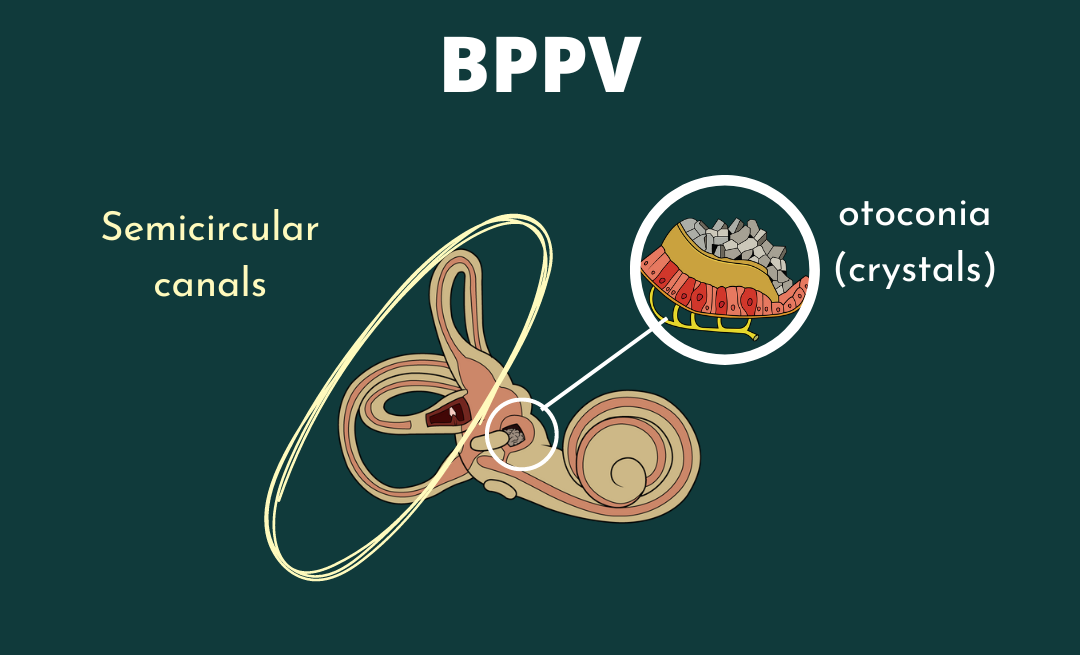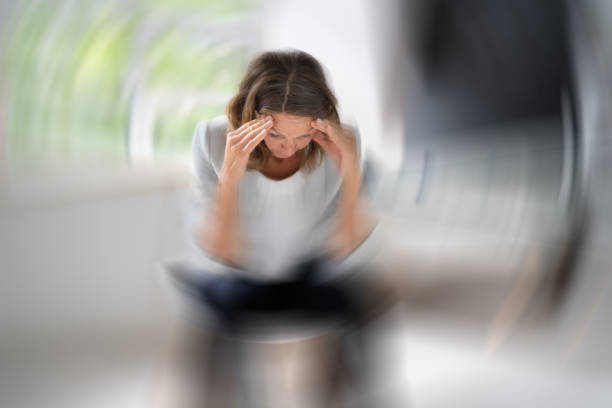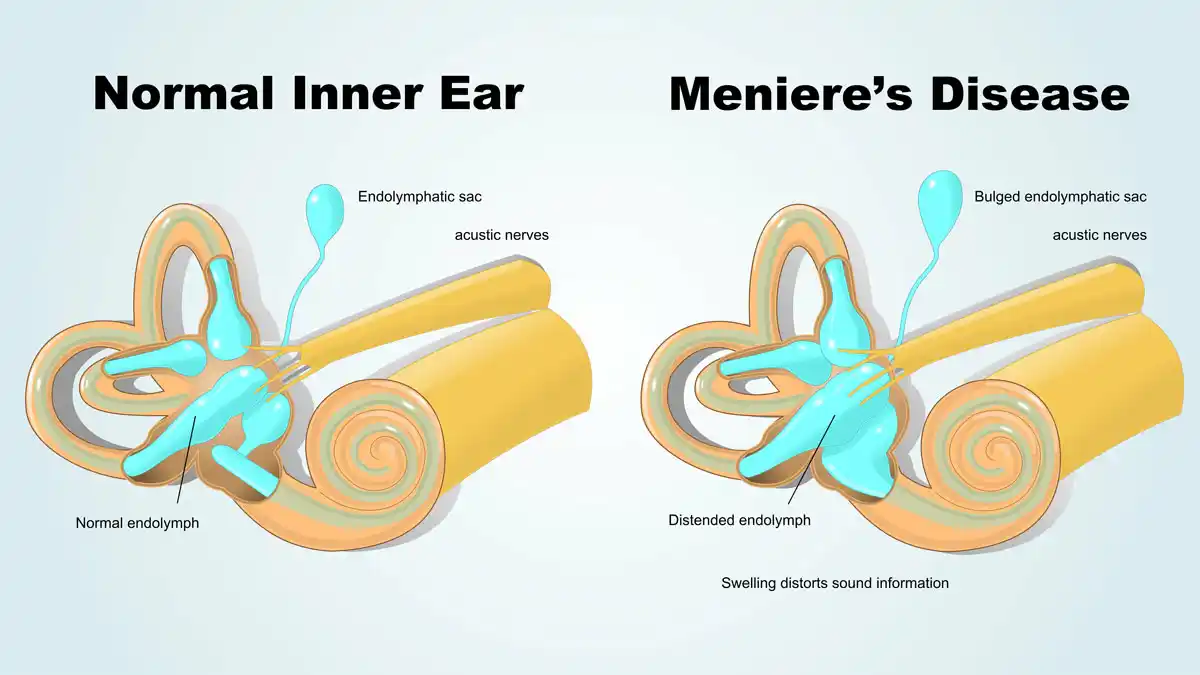What is the Best Treatment for BPPV?
Benign Paroxysmal Positional Vertigo (BPPV) is a common cause of vertigo, characterized by brief episodes of dizziness triggered by changes in head position. This condition occurs when tiny calcium particles (otoconia) in the inner ear become dislodged and enter one of the semicircular canals, leading to a sensation of spinning.
BPPV Background and Anatomy
Otoconia are calcium carbonate crystals that reside in the utricle and saccule. The utricle and saccule help detect linear motion (up/down, forward/backward, side to side, tilting). The otoconia assist in this by responding to gravity which sends signals to the brain to interpret motion. Imagine a jar full of pebbles, tilting the jar will cause the pebbles to change distribution. The brain can take information like this and understand which direction the head is tilting, and direction of movement.
The semicircular canals are filled with a fluid called endolymph, and the job of the semicircular canals is to sense rotational movement. There are three canals positioned in different angles to detect different types of motion. As the fluid (endolymph) moves at various speeds in the different canals, tiny hair like cells called cilia move, and the brain is able to determine direction of movement and change in speed of movement. So what happens when a otoconia crystal winds up in the endolymph fluid of a semi circular canal? BPPV

BPPV results in short, intense sensation of room spinning. This is brought on typically with certain head or body positions. As a provoking head position is brought on, the otoconia/crystals are encouraged to start moving due to gravity’s pull. As the otoconia move through the canal, this changes the rate the endolymph moves in the affected canal(s). This results in the brain getting mismatched signals from the vestibular systems and symptoms of dizziness, unsteadiness, room spinning, nausea, anxiety, sweats etc.
Vestibular information tells the brain movement information to help with balance and knowing where the body is in space. This information also helps the brain direct the eyes in the same direction and speed of the body for smooth gaze (vestibulo-occular reflex). With BPPV, the brain is getting multiple signals and is trying to have the eyes follow, resulting in nystagmus. Nystagmus is an involuntary, rhythmic eye movement. This can happen for other reasons, and can occur in different directions. This is helpful when testing, diagnosing and treating BPPV.
Assessing BPPV
Assessment for BPPV involves positional testing. This includes head and body movements while assessing for symptoms and any eye nystagmus. Each portion of the assessment is important in an accurate BPPV diagnosis and determining the correct maneuver to treat the involved canal(s). Positional testing assessing each canal. Determining which position recreates what someone has been feeling, and noting the direction of nystagmus helps determine which canal(s) and which side (left or right) is involved. This guides proper set up and treatment for BPPV.
Treatment for BPPV
Canalith repositioning maneuver (CRM) is commonly used to treat BPPV. It is important to properly assess the correct side and canal involved to choose and set up the correct CRM. The goal of CRM is to have otoconia travel through the semicircular canal and fully clear out of the canal to resolve symptoms. The Epley maneuver is a very common and successful treatment for posterior canal BPPV. If another canal is involved, other maneuvers is needed. A vestibular physical therapist can assess and determine next steps. Other providers that may address this can include ENTs or chiropractors but on an individual basis.
There are no medications that treat BPPV. There are some medications that can be helpful during treatment to better tolerate any dizziness or nausea. In rare instances, surgery can be performed to plug the posterior semicircular canal. This includes it’s own risk such as hearing loss and best to be discussed with a medical professional.
There are ways to treat BPPV at home. Assessment is still important to determine if symptoms are in fact BPPV and identifying the proper maneuver to set up. Some people have the same side and canal each time and will be taught at home CRM by their provider that they have seen for BPPV treatment. If recurrence is few and far between, or can involve different canals, the healing vertigo app is a great resource when at home, out of town, or needing guidance on positional testing and determining the proper home set up.
Guidelines for BPPV Treament
Typically, I recommend 2-3 maneuvers in a session and then give a day or two to see what’s improved. It’s normal to feel “off” or worse after a treatment session and then feel overall better once given some time to recover. Sometimes people feel immediately better after a session, other’s don’t, and they both be cleared of BPPV. Allowing 1-2 days post treatment can get a better idea how one is really feeling after allowing the body time to recover after treatments. Treatment does recreate dizziness in order to move the otolith through the canal, and why people can feel worse after, and why medications can help make treatments more tolerable. This is just a starting point and can be adjusted based on the person. Sometimes I’ve done one maneuver, other times five or more, it just all depends!
Some recommend avoiding certain movements, this is okay to a point, but avoiding movement forever or being afraid to move is not the end goal. Taking a day to avoid larger bending or laying flat is okay for comfort, but getting back into basic routine will ultimately give the feedback needed to determine if more treatment or assessment is needed.
Sometimes BPPV is cleared and certain movements can feel “off” as the body adjusts to vestibular systems with cleared BPPV. Some vestibular rehabilitation therapy and balance work can help after BPPV treatment and clearance to help any lingering or residual sensations.
Want to learn more about BPPV treatment and other vestibular tools from the experts and be a part of a supportive community to get back to your daily life? Find out more at this link: https://thevertigodoctor.com/about-group/
Disclaimer:
Remember: this post is for informational purposes only and may not be the best fit for you and your personal situation. It shall not be construed as medical advice. The information and education provided here is not intended or implied to supplement or replace professional medical treatment, advice, and/or diagnosis. Always check with your own physician or medical professional before trying or implementing any information read here.






